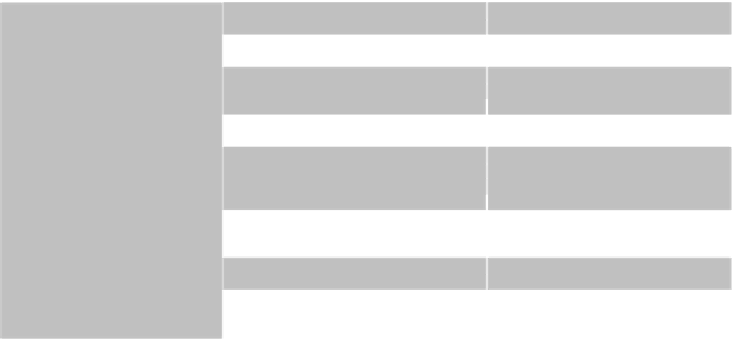Information Technology Reference
In-Depth Information
Version A
Version B
x
Concurrency 1:
L and M can be executed at
the same point of time. (correct, close)
x
Concurrency 1:
D and P can be executed
at the same point of time. (wrong, distant)
A
B
C
D
x
Concurrency 2:
G and S can be executed in
parallel. (wrong, distant)
x
Concurrency 2:
G and H can be
executed in parallel. (wrong, close)
x
Exclusiveness 1:
In one process instance E as
well as F can be executed. (correct, close)
x
Exclusiveness 1:
In one process instance
K as well as S can be executed. (correct,
distant)
G
I
H
J
E
F
x
Exclusiveness 2:
The process steps C and R
are mutually exclusive. (wrong, distant)
x
Exclusiveness 2:
The process steps E and
F are mutually exclusive. (wrong, close)
K
x
Sequence 1:
If T as well as J are executed in
a process instance, then T has to be finalized,
before J can start. (wrong, distant)
x
Sequence 1:
If A as well as C are
executed in a process instance, then A has
to be finalized, before C can start.(correct,
close)
L
M
N
O
x
Sequence 2:
If B as well as A are executed in
a process instance, then B is executed before
A. (wrong, close)
x
Sequence 2:
If B as well as T are
executed in a process instance, then B is
executed before T. (correct, distant)
P
x
Repetition 1:
U can be executed more often
than D. (correct, distant)
x
Repetition 1:
L can be executed more
often than M. (wrong, close)
Q
R
S
T
x
Repetition 2:
In each process instance Q is
executed exactly as often as P. (correct, close)
x
Repetition 2:
In each process instance O
is executed exactly as often as I. (correct,
distant)
U
Fig. 4.
Example of Asking Model Comprehensability Questions
or wrong and 2) the location of the chosen activities. For varying the location
of activities consistently, we decided to use pairs of activities, which are either
close (
1 activity between them) or distant (
>
1 activity between them). As a
consequence, we constructed the test material, such that each question was used
once in each of four constellations (correct-close, correct-distant, wrong-close,
wrong-distant), leading to 32 different question instances.
To ensure reliability of measurement we used a replication of the study design
(questionnaire version A and B). In the replication, exactly the same models and
comprehension questions were used, but the questions were asked for different
activities in another constellation. Fig. 4 demonstrates how questions were asked
for a specific process model.
≤
Measured Variables.
The outcome of our main dependent variable
compre-
hension
is cognitive per se, i.e. it is created in the viewer's cognition and not
directly observable. Therefore, it can only be measured indirectly or via com-
prehension questions. According to Aranda et al. [9] there are four variables
that can measure comprehensibility:
correctness
(did the participant give the
right answer?),
confidence
(certainty of the participant in his answers),
perceived
diculty
(to answer the question, as subjective judgment by the participant)
and
time
(required to give an answer). In our experiment, we chose to use the
main objective and subjective measure of cognitive diculty, viz. the percentage
of correct answers (correctness) as objective measure and the user's rating of
cognitive load as subjective measure (perceived diculty). To measure the per-
ceived diculty, we asked the users to rate it on a 7-point Likert-scale (with the
labels “very dicult”, “dicult”, “rather dicult”, “neither dicult nor easy”,
“rather easy”, “easy” and “very easy”).





















































































